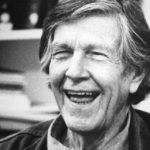 Crime
Crime  Crime
Crime  Technology
Technology 10 Hilariously Over-Engineered Solutions to Simple Problems
 Miscellaneous
Miscellaneous 10 Ironic News Stories Straight out of an Alanis Morissette Song
 Politics
Politics 10 Lesser-Known Far-Right Groups of the 21st Century
 History
History Ten Revealing Facts about Daily Domestic Life in the Old West
 Weird Stuff
Weird Stuff 10 Everyday Products Surprisingly Made by Inmates
 Movies and TV
Movies and TV 10 Actors Dragged out of Retirement for One Key Role
 Creepy
Creepy 10 Lesser-Known Shapeshifter Legends from Around the World
 Animals
Animals 10 Amazing Animal Tales from the Ancient World
 Gaming
Gaming 10 Game Characters Everyone Hated Playing
 Crime
Crime 10 Terrifying Serial Killers from Centuries Ago
 Technology
Technology 10 Hilariously Over-Engineered Solutions to Simple Problems
 Miscellaneous
Miscellaneous 10 Ironic News Stories Straight out of an Alanis Morissette Song
Who's Behind Listverse?

Jamie Frater
Head Editor
Jamie founded Listverse due to an insatiable desire to share fascinating, obscure, and bizarre facts. He has been a guest speaker on numerous national radio and television stations and is a five time published author.
More About Us Politics
Politics 10 Lesser-Known Far-Right Groups of the 21st Century
 History
History Ten Revealing Facts about Daily Domestic Life in the Old West
 Weird Stuff
Weird Stuff 10 Everyday Products Surprisingly Made by Inmates
 Movies and TV
Movies and TV 10 Actors Dragged out of Retirement for One Key Role
 Creepy
Creepy 10 Lesser-Known Shapeshifter Legends from Around the World
 Animals
Animals 10 Amazing Animal Tales from the Ancient World
 Gaming
Gaming 10 Game Characters Everyone Hated Playing
The 10 Most Pioneering Yet Polarizing Premieres in Classical Music
In the grand theatre of classical music, where the echoes of centuries-old compositions blend with the whispers of innovation, there exist performances that have not only shaped the course of music history but also divided its audience and critics alike. These are the premieres that, at their inception, dared to challenge the conventions of their time, inciting reactions that ranged from awe to outrage.
This list delves into the heart of these historical debuts, often ahead of their time, that were met with skepticism and scorn by many contemporaries. Yet, their innovative approaches and daring themes have earned them a revered place in the annals of music history.
Join us as we journey through the annals of classical music, uncovering the tumultuous tales and transformative impacts of its most controversial premieres. Through these stories, we gain insight into the evolving landscape of classical music and the enduring power of art to provoke, challenge, and ultimately inspire.
Related: Top 10 Truly Disturbing Classical Pieces
10 Igor Stravinsky’s The Rite of Spring
When Igor Stravinsky’s The Rite of Spring premiered on May 29, 1913, at the Théâtre des Champs-Élysées in Paris, it ignited one of the most infamous riots in music history. This groundbreaking work, with its complex rhythms, dissonant harmonies, and primitive themes, challenged the audience’s expectations of ballet and orchestral music.
The performance provoked a near-riot, with supporters and detractors of the work engaging in physical altercations, and the cacophony in the audience reportedly drowned out the orchestra at times. The ballet’s choreography by Vaslav Nijinsky, coupled with Stravinsky’s avant-garde score, was a departure from traditional ballet music and storytelling. Its reception was polarizing, with some praising its innovation and others condemning its perceived discordance and departure from classical norms.
Despite the initial uproar, The Rite of Spring has since been celebrated as a pivotal work that heralded a new era in music, influencing countless composers and establishing Stravinsky as one of the leading composers of the 20th century. This premiere serves as a testament to the power of art to provoke, divide, and ultimately transform.[1]
9 Arnold Schoenberg’s Pierrot Lunaire
Arnold Schoenberg’s Pierrot Lunaire premiered on October 16, 1912, in Berlin, marking a significant moment in the evolution of musical expression. This atonal masterpiece for voice and small ensemble, based on a cycle of poems by Albert Giraud, introduced the technique of Sprechstimme, a vocal style that hovers between speaking and singing. Schoenberg’s departure from traditional tonality to atonality challenged listeners’ and performers’ notions of music and harmony.
The premiere of Pierrot Lunaire was both a critical and a contentious event, with audiences divided over Schoenberg’s innovative techniques and dissonant harmonies. Some hailed it as a revolutionary work that pushed the boundaries of musical language. In contrast, others struggled to grasp its abstract forms and emotional intensity.
Despite the mixed reactions, Pierrot Lunaire has since been recognized as a seminal work of the early 20th century, significantly influencing the development of modern music and laying the groundwork for Schoenberg’s later explorations in twelve-tone composition. Its polarizing debut underscores the challenges and rewards of embracing new artistic paradigms.[2]
8 John Cage’s 4’33”
John Cage’s 4’33” premiered on August 29, 1952, at the Maverick Concert Hall in Woodstock, New York, and is perhaps one of the most controversial pieces in the history of music. Performed by pianist David Tudor, the piece consists of four minutes and thirty-three seconds, during which the performer does not play a single note. Instead, the “music” of the piece is composed of the ambient sounds present in the environment during the performance, challenging the very definition of music.
Cage’s conceptual piece was met with a mix of confusion, outrage, and intrigue. Critics and audiences alike questioned whether 4’33” could even be considered music. Despite its polarizing nature, 4’33” has become one of the most famous and important pieces of the 20th century, celebrated for its radical embrace of silence as a musical element and its philosophical implications on the nature of sound and listening. Cage’s work questions the boundaries of musical composition and the role of the audience in the musical experience, making 4’33” a landmark event in avant-garde music.[3]
7 George Crumb’s Black Angels
George Crumb’s Black Angels, premiered on May 13, 1970, by the New York String Quartet at the University of Michigan, stands as a haunting reflection on the turmoil of the Vietnam War era. This electric string quartet is an exploration of timbre, extended technique, and theatricality, incorporating electronic effects, spoken word, and unconventional instruments like crystal glasses and gongs. Crumb described the piece as a “parable on our troubled contemporary world,” utilizing the number thirteen as a structural and symbolic motif throughout the work.
The premiere of Black Angels was met with a mixture of awe and discomfort, with audiences unaccustomed to such an intense and stark portrayal of conflict and spirituality in a classical music setting. Its innovative use of electric string instruments and amplification, along with its thematic darkness, positioned Black Angels as a groundbreaking work that blurred the lines between classical music and the experimental avant-garde.
Despite—or perhaps because of—its challenging nature, Black Angels has come to be regarded as one of the most significant American works of its time, embodying the societal unrest and quest for understanding that defined the era. It remains a powerful testament to the capacity of music to reflect and influence the cultural and political landscapes from which it emerges.[4]
6 Karlheinz Stockhausen’s Gesang der Jünglinge
Karlheinz Stockhausen’s Gesang der Jünglinge, which premiered in 1956 at the West German Radio in Cologne, is a landmark piece in electronic music, blending human vocal sounds with electronic tones. This pioneering work is based on the biblical story of the fiery furnace from the Book of Daniel, using the processed voice of a boy soprano to explore the spatial and timbral possibilities of sound.
Stockhausen’s composition stands out for its innovative use of electronic music technology to create a complex, multi-layered auditory experience. The reception of Gesang der Jünglinge was mixed, with some praising Stockhausen for his revolutionary approach to composition and sound design, while others were perplexed or even alienated by the unfamiliar sounds and the absence of traditional musical structures.
Despite its divisive debut, the piece has since been recognized as a pivotal work in the development of electronic and acousmatic music, influencing countless composers and sound artists in the decades that followed. Stockhausen’s Gesang der Jünglinge not only challenged the conventions of music composition and listening but also expanded the possibilities of musical expression in the electronic age, making it one of the most significant musical premieres of the 20th century.[5]
5 Luciano Berio’s “Sequenza III” for Solo Voice
Luciano Berio’s “Sequenza III” for solo voice premiered in 1966, performed by mezzo-soprano Cathy Berberian. It is a masterpiece of vocal experimentation that explores the vast capabilities of the human voice. This piece is part of Berio’s larger series of “Sequenzas,” each dedicated to pushing the limits of a single instrument or voice. “Sequenza III,” in particular, utilizes a wide range of vocal techniques, including laughter, whispers, cries, and linguistic fragments to create a vivid and emotionally charged soundscape.
The premiere of “Sequenza III” was met with astonishment and confusion as audiences were confronted with a work that stretched the boundaries of traditional vocal music. Berberian’s performance, which required not only exceptional vocal control but also dramatic expressivity, challenged conventional notions of musicality and performance. Critics and listeners alike were divided in their responses, with some heralding the work as a groundbreaking achievement in contemporary music. In contrast, others struggled to find coherence in its avant-garde approach.
Despite its polarizing debut, “Sequenza III” has come to be celebrated for its innovative use of the voice as an instrument of pure sound, devoid of its traditional role in melody and harmony. Berio’s work opened new avenues for vocal composition and performance, marking “Sequenza III” as a pivotal moment in the evolution of modern music.[6]
4 Pierre Boulez’s Le Marteau sans Maître
Pierre Boulez’s Le Marteau sans Maître premiered in 1955 at the International Society for Contemporary Music in Baden-Baden, Germany, and stands as a seminal work in post-war modernist music. This composition for voice and ensemble, based on the surrealist poetry of René Char, is celebrated for its innovative structure, serial techniques, and the integration of non-Western instruments, such as the xylorimba and vibraphone, into the fabric of Western art music.
The premiere of Le Marteau sans Maître was a polarizing event, with some members of the audience and critics unable to grasp Boulez’s complex serialism and the abstract interplay between the music and Char’s poetry. Some saw the work’s dense textures and atonal language as emblematic of the most challenging aspects of contemporary music, leading to debates about the future direction of classical music.
Despite initial resistance, Le Marteau sans Maître has been recognized as a groundbreaking achievement that expanded the possibilities of musical form, rhythm, and timbre. Boulez’s masterpiece has exerted a profound influence on subsequent generations of composers, securing its place as one of the most important works of the 20th century. The premiere marked a pivotal moment in the evolution of modern music, embodying the avant-garde’s quest for new expressive means.[7]
3 György Ligeti’s Atmosphères
György Ligeti’s Atmosphères, which premiered in 1961 at the Donaueschingen Festival in Germany, is a groundbreaking piece for full orchestra that completely eschews conventional melody, harmony, and rhythm in favor of dense sound textures and micro-polyphonic techniques. This work marked a significant departure from traditional musical structures, instead creating a seamless flow of sound that Ligeti described as “static music.”
The premiere of Atmosphères left audiences and critics in a state of awe and bewilderment. Some were captivated by its innovative use of the orchestra to create a complex, evolving soundscape, while others were unsure how to react to a piece that defied every expectation of what music could be. Ligeti’s work was seen as pushing the boundaries of the orchestral repertoire, challenging listeners to reconsider the essence of music itself.
Atmosphères has since been recognized as a seminal work of the 20th century, influencing composers, filmmakers, and artists alike. Its use in Stanley Kubrick’s 2001: A Space Odyssey introduced Ligeti’s visionary sound world to a broader audience, cementing the piece’s status as a landmark in modern music. The premiere represents a pivotal moment in classical music, showcasing the endless possibilities of sound and the avant-garde’s relentless pursuit of the new.[8]
2 Milton Babbitt’s Philomel
Milton Babbitt’s Philomel, which premiered in 1964, is a pioneering work for soprano, synthesized sound, and tape, merging traditional vocal techniques with electronic music in a way that was groundbreaking at the time. Based on a myth from Ovid’s Metamorphoses, the piece integrates the live performance of the soprano with prerecorded and processed sounds, creating a unique dialogue between human and machine.
The premiere of Philomel was a landmark event in the integration of electronic technology into classical music composition and performance. Audiences were confronted with a new musical landscape where the distinctions between live and electronic, natural and synthetic, were blurred. Babbitt’s work was both praised for its technical innovation and critiqued by those who found the electronic elements cold or alienating.
Despite its mixed initial reception, Philomel has come to be recognized as a seminal piece in the development of electronic music. It showcased the potential for new technology to expand the expressive capabilities of classical music, influencing subsequent generations of composers to explore the intersections of music, technology, and narrative.
The premiere of Philomel marked a pivotal moment in the evolution of contemporary music, highlighting the transformative power of electronic sound in classical composition.[9]
1 Louis Andriessen’s De Staat
Louis Andriessen’s De Staat premiered in 1976 and is a compelling work for a large ensemble that reflects the composer’s engagement with political and social issues, specifically his critique of Plato’s views on music and society from The Republic. Andriessen combines minimalism, repetitive structures, and driving rhythms with the influences of jazz and rock, creating a work that is both intellectually engaging and viscerally powerful.
The premiere of De Staat was a provocative event in the world of contemporary classical music, challenging audiences with its bold integration of musical genres and its political message. Some listeners were enthralled by Andriessen’s innovative approach and the work’s energetic impact. Others were less receptive to its stylistic juxtapositions and overt philosophical underpinnings.
Over time, De Staat has been recognized as a landmark work in Andriessen’s oeuvre and in the development of minimalist music. It has inspired discussions on the role of music in society and the possibilities for classical music to engage with contemporary issues. The premiere of De Staat stands as a testament to Andriessen’s vision of a new musical language that is both reflective and transformative, securing its place as a pivotal moment in the evolution of 20th-century music.[10]








